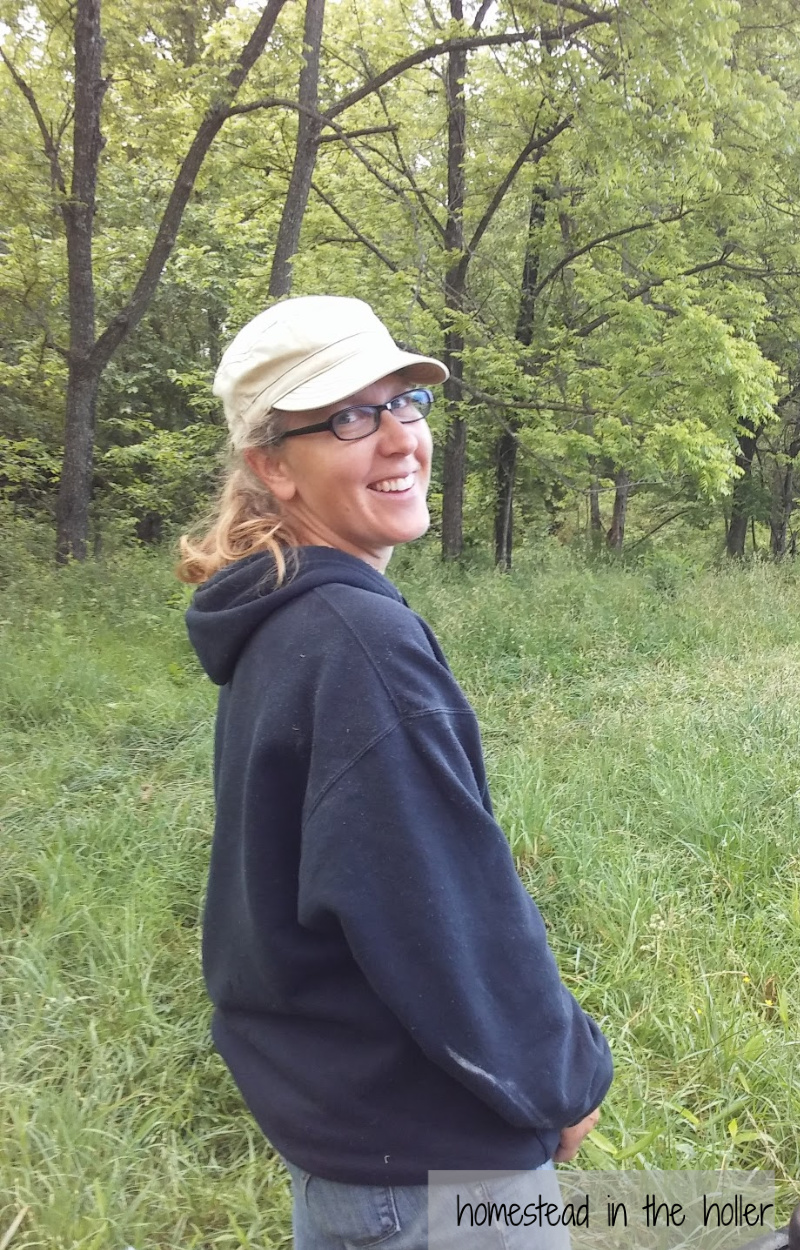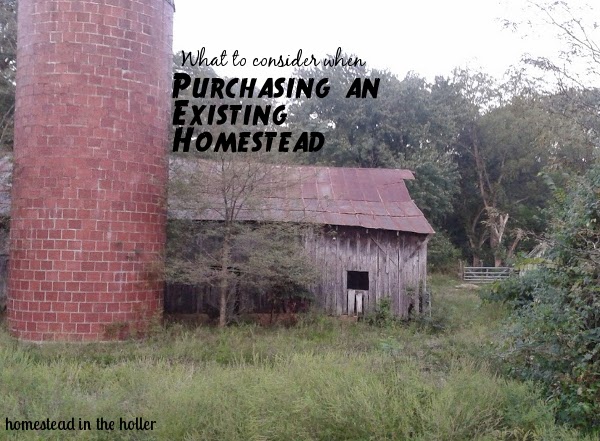Homestead in the Holler is a participant in the Amazon Services LLC Associates Program, an affiliate advertising program designed to provide a means for sites to earn advertising fees by advertising and linking to amazon.com.
We purchased an old farm in 2014 and are working on getting things up and running again. This farm hasn’t been functional for quite a few years. The pastures were rented out for grazing, but the buildings have not been used.
When we were looking for properties, we were looking with our mind on permaculture design. While any property can benefit from applying permaculture principles, there were certain elements we were particularly interested in. Having water, pastures and trees all designed carefully is a high priority for us. While there are advantages to buying an older farm with existing buildings, we are finding there are challenges as well.
Advantages
There are clearly advantages to buying a homestead that has a house and outbuildings. Here are a few of the advantages that we found when purchasing our property.
- Existing utilites; electricity, septic system and a good well are a huge advantage.
- Structurally sound barns and other outbuildings are very helpful. The buildings can be used for storage, animal feed, hay, animals and whatever else you need to put away. We didn’t realize just how much stuff we had until we moved, so having extra storage space is great!
- Established trees in the farm yard and forest areas. Trees take years to establish, having large shade trees and shrubs is a lovely benefit. Not to mention the stable ecosystem in the forested areas.
- Existing ponds, springs and streams. It takes a lot of thought and work to build a pond. Having water works already in place is a great jump start.
- Surprises such as spring flowers, roses, fruit trees and perennial garden plants like rhubarb and berries are icing on the cake!
What to Consider
As with everything, there are also things to take into consideration when purchasing an existing homestead. This is especially true if it’s an older place that’s in need of some repair. These aren’t necessarily deal breakers, just a list of things that are valuable when evaluating a property for your homestead.
- Closely evaluate the outbuildings. Check for working electricity and if the buildings are structurally sound. Not all is lost if a building is not structurally sound. Barn wood is great for decor and selling barn wood could potentially be a side business. Some of the barns on our property need to be torn down, some due to the placement of the barn and some are in disrepair.
- Make note of streams and dry creek beds. Dry creek beds and streams are wonderful assets to your farm, in the right place. If flooding will threaten your house, livestock or barn structure, you may want to reconsider the placement of the barn and it’s occupants. A local also pointed out a good technique for our area to determine if a stream is seasonal or flows year round: the streams with water cress growing in them flow all the time.
- Check the fences. A good perimeter fence is very valuable and will save you a lot of time and money. Also keep in mind the kind of fencing that is there. Is it compatible with the animals that you intend to raise? We have a lot of barbed wire fence here, some of it is in decent shape, most of it is not. We intend to raise sheep, goats and pigs so barbed wire fencing isn’t the correct fencing for our needs. Thankfully there is electric fencing that will help us get going quickly as we work on improving our fences.
- Evaluate the ponds. Are the dam walls damaged in any way? Over time trees and animals can weaken the dam walls. Thankfully this problem is fixable. We have a couple of ponds that are placed in great locations but need some work. Cedar trees need to be removed from the dam walls and a few weak spots repaired. It’s ideal if the animals have been fenced out of the ponds. This will keep the integrity of the pond, encourage ecosystems and keep the ponds clean.
- Water infrastructure. Having water hydrants located in various places as well as well placed ponds and streams are extremely helpful on the homestead. While you can haul water out to your animals, it’s really nice to have a water source nearby! Your back will thank you.
- Look at the placement of the buildings on the farm. Are the buildings and pens located in a way that you can develop a good routine without going out of your way (think permaculture zones here)? You will develop a routine over time, but it is important to consider whether the buildings are placed in a way that will be efficient for your purposes. If a barn or pen is in a position that is out of your way, chores will be time consuming and less pleasant, especially in the winter.
- Look at the lay of the land. Trees on steep slopes and flat and open pastures are ideal. We have a mixture of trees and pastures here, with rolling hills. It’s perfect for rotational grazing and orchards, which is what we plan to do. Keep in mind that most farmers and even ranchers do not like heavily treed properties, so if they work into your system, you can save money.
- Soil quality. Checking the quality of the soil will give you a good indication of how to amend your soil. Our soil here is rocky with a high clay content and low on organic material. The high clay content is great for building ponds. We are also fortunate to have a creek that floods each year, which deposits a lot of rich, black soil. We are going to use some of that soil in our garden this year.
Starting a homestead is a lot of hard work, no matter how you look at it. But it’s rewarding work, and worth it! A lot of things can be worked around, ponds can be dug, fencing replaced, barns repaired or built new. It all depends on how much you love the property and how much you are able to invest in time and money. In the end, you may feel naturally drawn to one property. Trust your instincts. Now, go grow some stuff!

Hi! Around here I wear many hats. Homesteader, farmer, homemaker, homeschool mom, gardener and builder. We strive for a simple, self-sufficient life on our little piece of paradise. Read more




Pingback: The Best Homesteading Articles and Books of 2015 | North Country Farmer
Pingback: 10 Homesteading Resolutions to Make for 2016 - The Coastal Homestead
Pingback: Top 10 Homesteading Resolutions to Make for 2017 - The Coastal Homestead